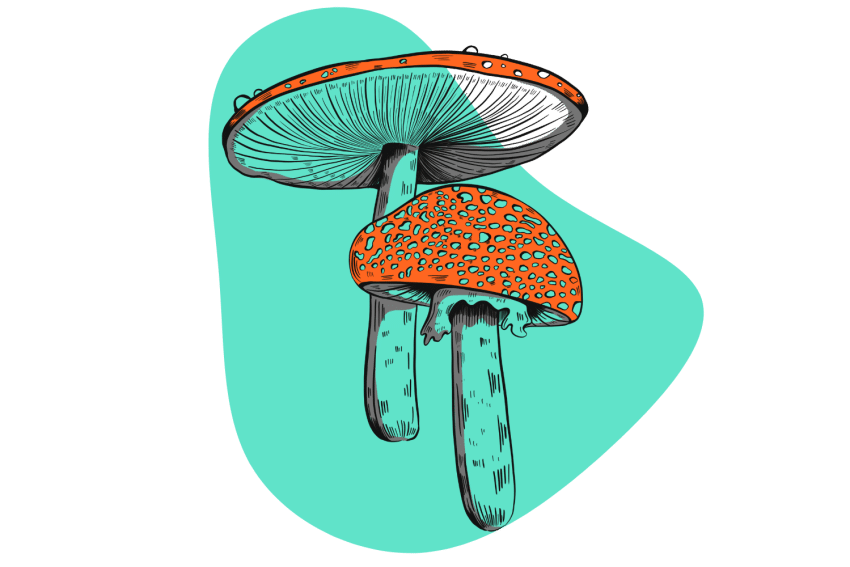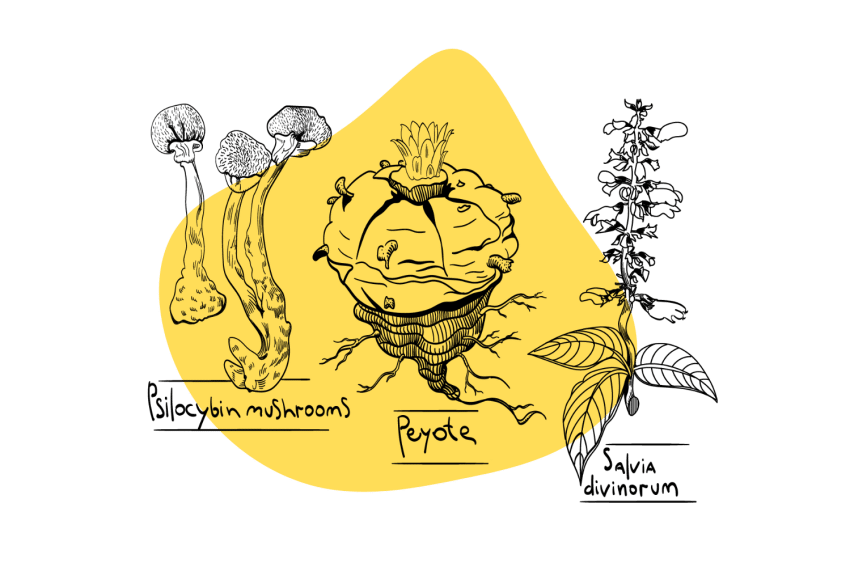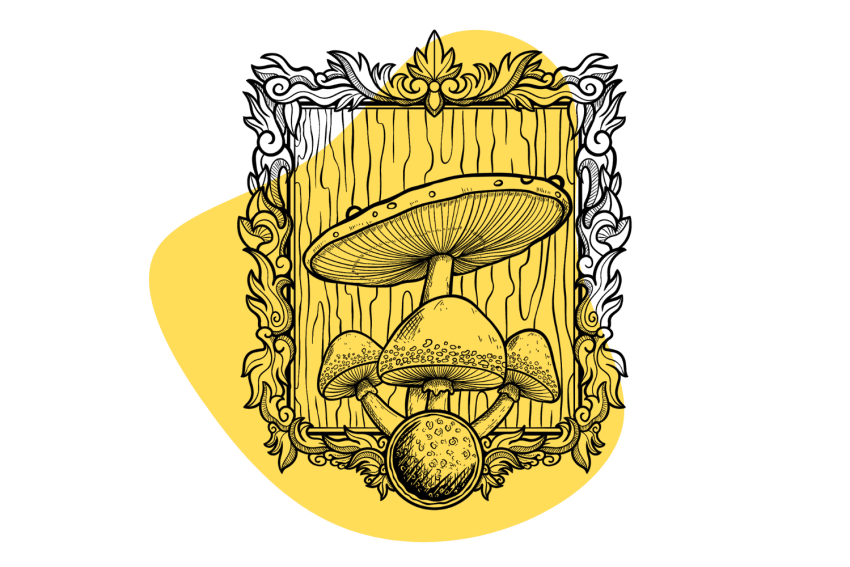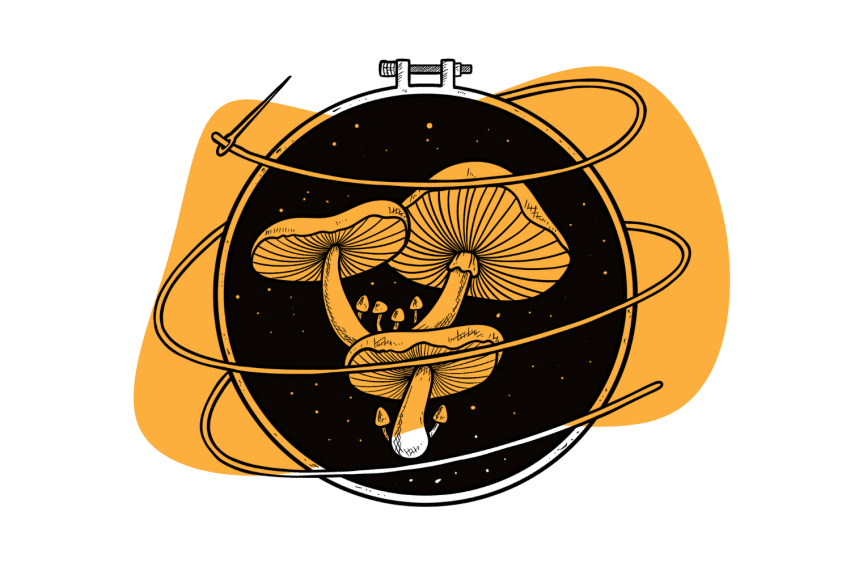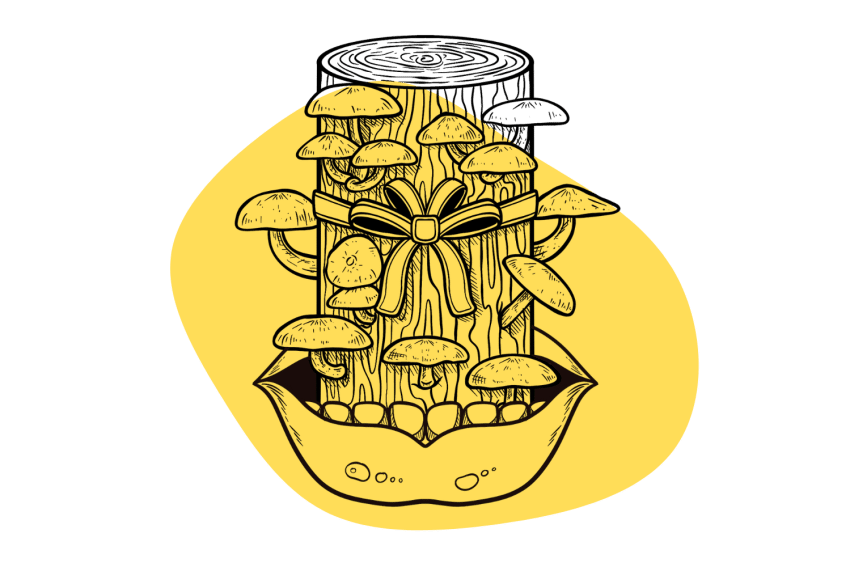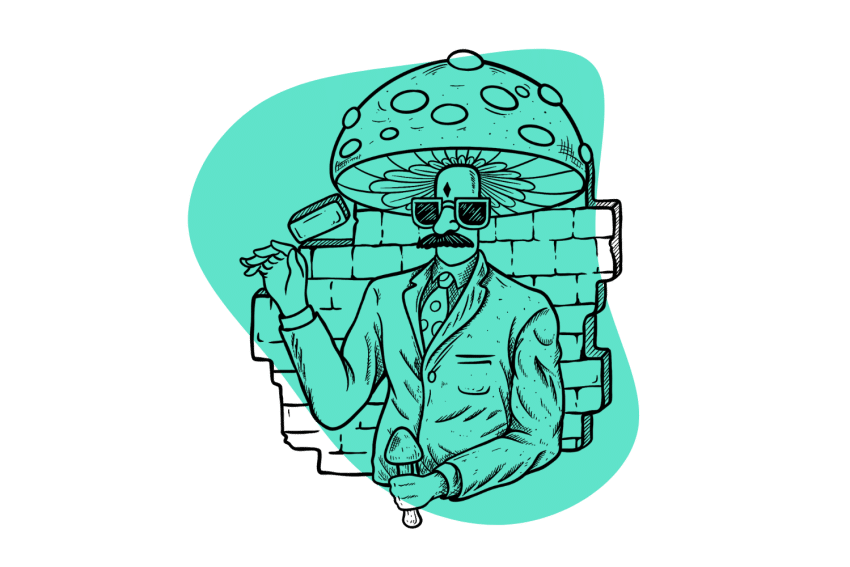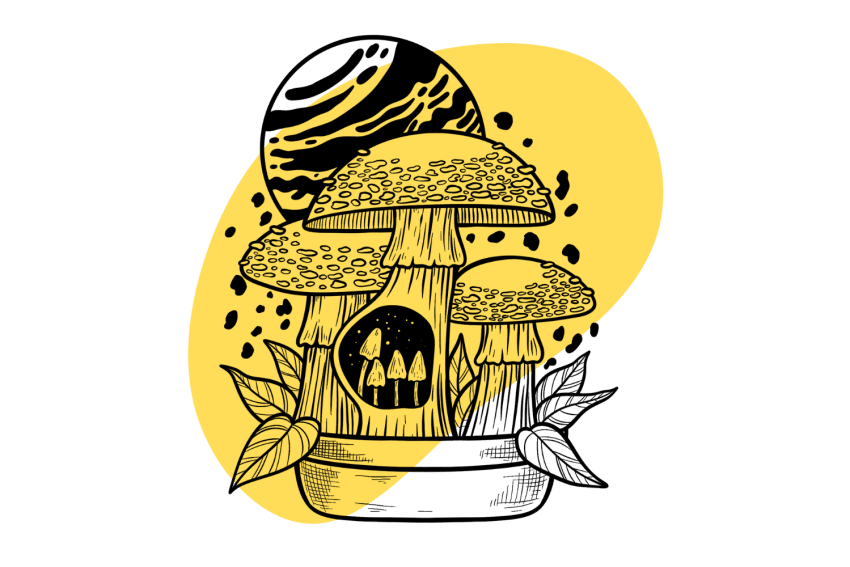Mushroom Santa: The Strange Correlations Between Christmas Tradition & Amanita Mushrooms
Santa’s main thing might be joy and merriment, but he’s no stranger to controversy either — let’s explore the strange correlation between magical mushrooms and Santa Claus.
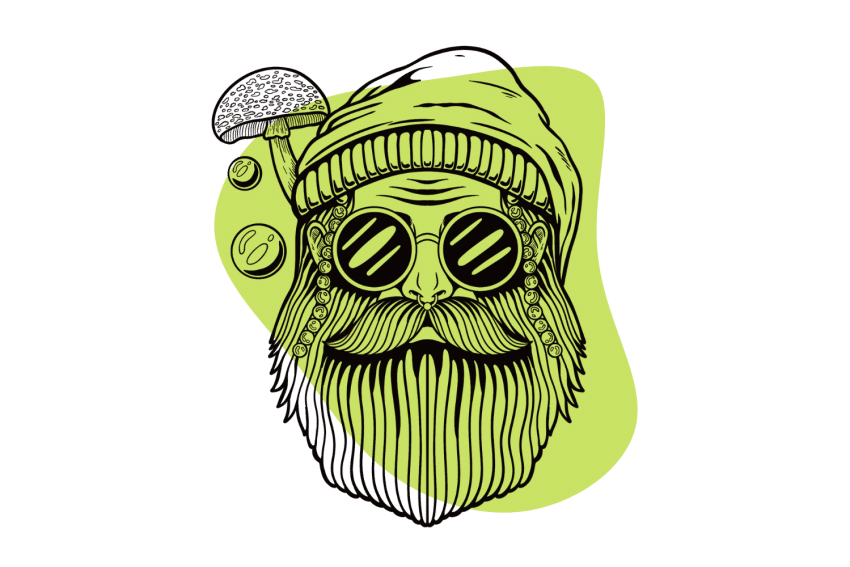
It’s cold outside around the end of December, and fresh snow has just fallen as you sit by the fire on a peaceful night with your family. As you’re sitting there, a jolly person in a red and white coat descends through your chimney.
After entering, they begin giving out brightly-colored presents, and upon receiving them, you experience overwhelming sensations of merriment, joy, and camaraderie with your family.
That’s because these “colorful gifts” are dried Fly Agaric (Amanita muscaria) mushrooms, and the person handing them out was a Siberian shaman performing their duties on the Winter Solstice. So why does it sound so much like our current tale of Old Saint Nick?
Let’s break down the similarities between the two and how they may have evolved to form our current understanding of Father Christmas.
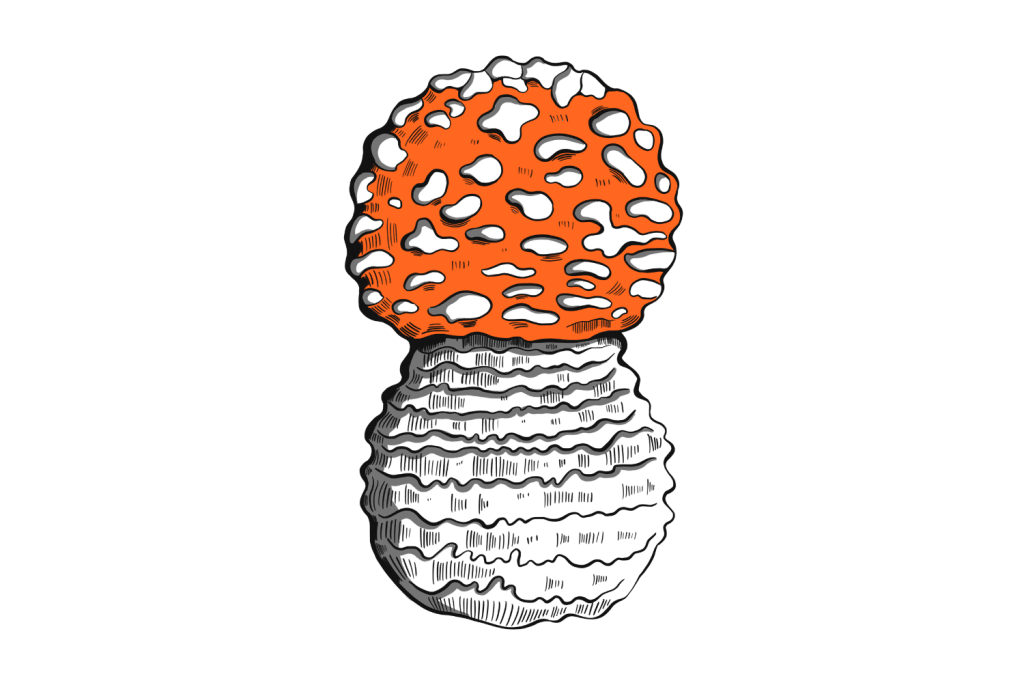
Similarities Between Santa & Amanita Muscaria
There are several comparisons between Santa and the practices of ancient Siberian tribes with the Amanita mushroom. Whether they’re directly responsible for our vision of Santa today is something we can’t state for sure.
Still, the number of comparisons is striking — and some of them are quite compelling. Even his location in a winter wonderland has drawn parallels to Siberia.
Other important similarities include:
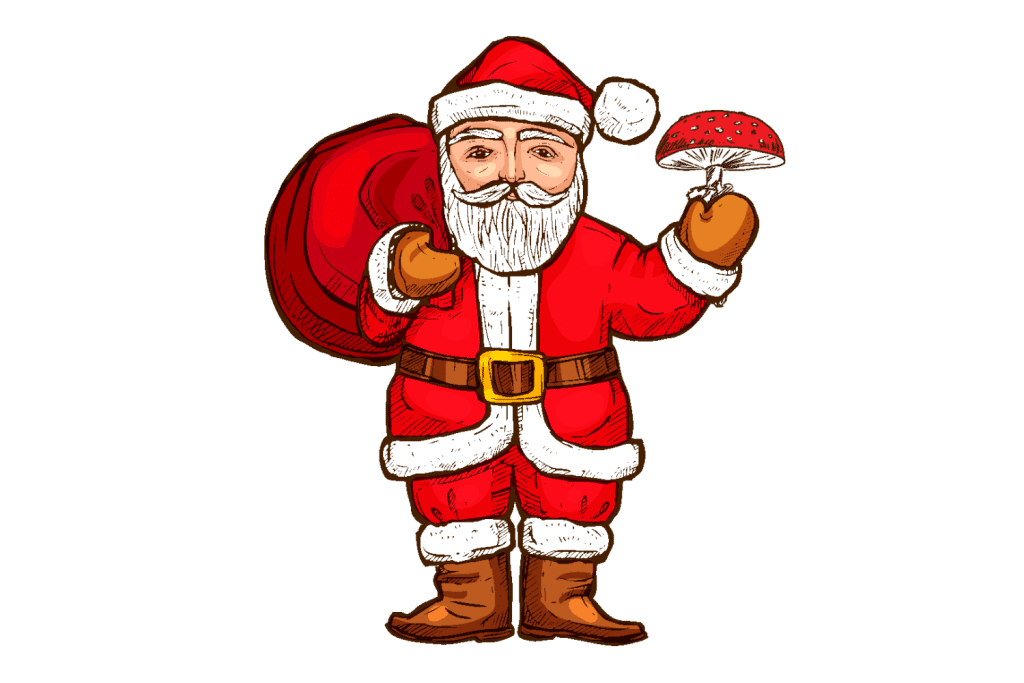
1. Santa’s Red & White Suit & the Amanita Mushroom 🍄
Santa’s suit matches the color scheme of the Amanita mushroom, and (according to some) this was true of some Siberian shamans.
While the evidence for this is limited, check out the attire worn by 7th-generation Siberian shaman Tatiana Urkachen as she explains the importance of the mushroom:
Is it possible Santa’s big red suit with flecks of white throughout is calling back to the mushrooms of Siberian shamanism?
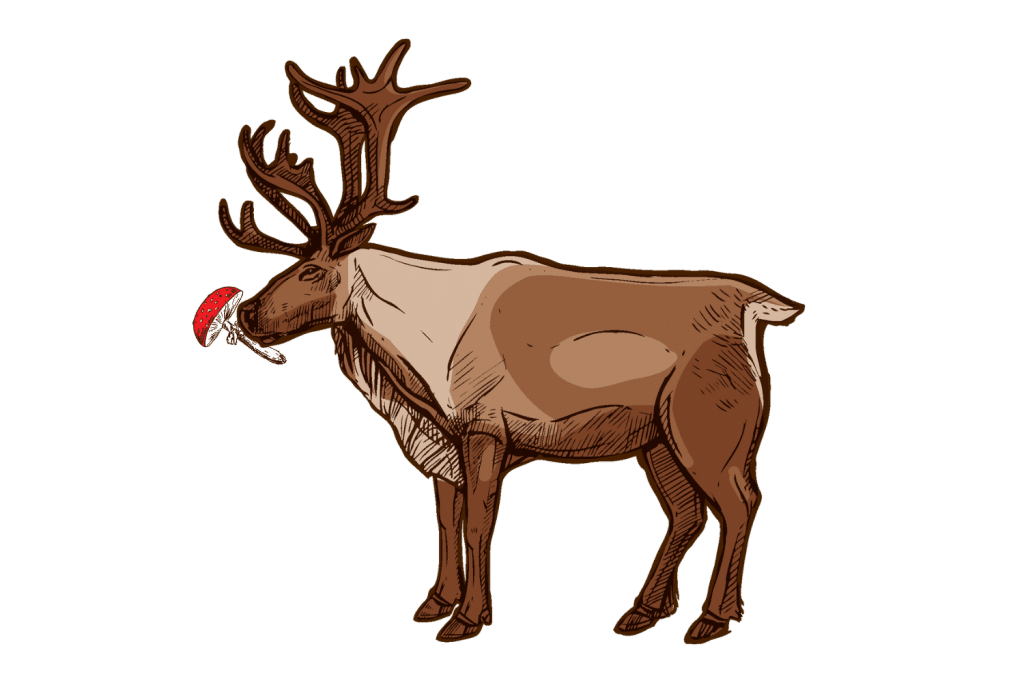
2. Santa’s Flying Reindeer
Flying was a common feat shamans would claim to achieve after using Amanita mushrooms.
What’s interesting about the “shaman” character of Santa is his reliance on the reindeer to help him fly.
Reindeer were vital to shamanism in Siberia both as a source of food and for the domestication of labor, but there may have been more “intimate” Amanita connections involved as well.
The raw Amanita muscaria mushroom is technically toxic to humans due to the presence of a psychoactive compound called ibotenic acid. This compound is metabolized by the liver into a safer (but still psychedelic) compound called muscimol and eliminated (intact) via the urine.
Shamans knew this and would feed their reindeer the mushrooms first. After a period of excitement (or, you might say, “reindeer games”), they would urinate out the muscimol [1].
The urine of these reindeer remains fully psychoactive and lacks the toxic ibotenic acid. Shamans would collect this urine and drink it for its psychoactive effects.
Some have even pointed to Rudolph’s red nose as a nod to shaman Santa not being able to operate without the reindeer first consuming the mushroom.
To be fair, much of this — beyond the importance of reindeer in Siberia — is tenuous at best.
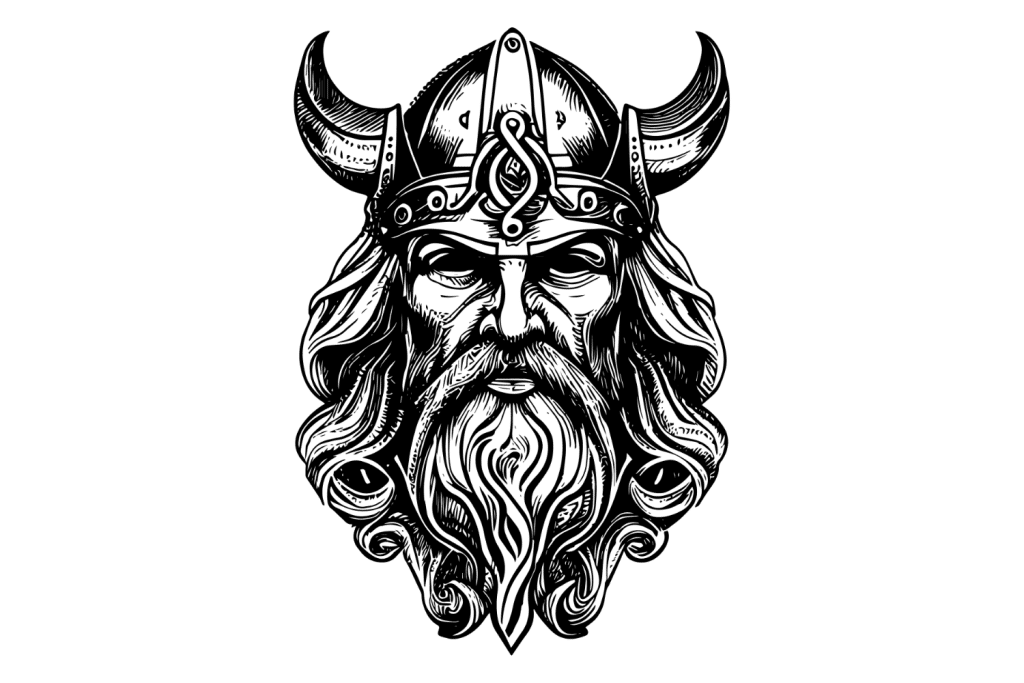
3. Santa as a Representation of Odin
Santa and Odin share a striking resemblance, leading many to suggest a connection. Aside from their similar appearances, Odin traveled on a flying chariot pulled by a goat — potentially a precursor to Santa’s flying sleigh.
Famously, Odin only had one eye after giving the other up to obtain wisdom which some suggest was an Amanita muscaria mushroom that can look like an eye plucked out of its socket [2]. It’s no secret that the A. muscaria was an important part of Norse mythology, so the symbology, perhaps lost over time, is possible.
Also important is the fact that many mythical figures over time have traveled in vessels pulled by flying animals throughout time. Whether Odin is the specific case Santa draws from or not is uncertain.
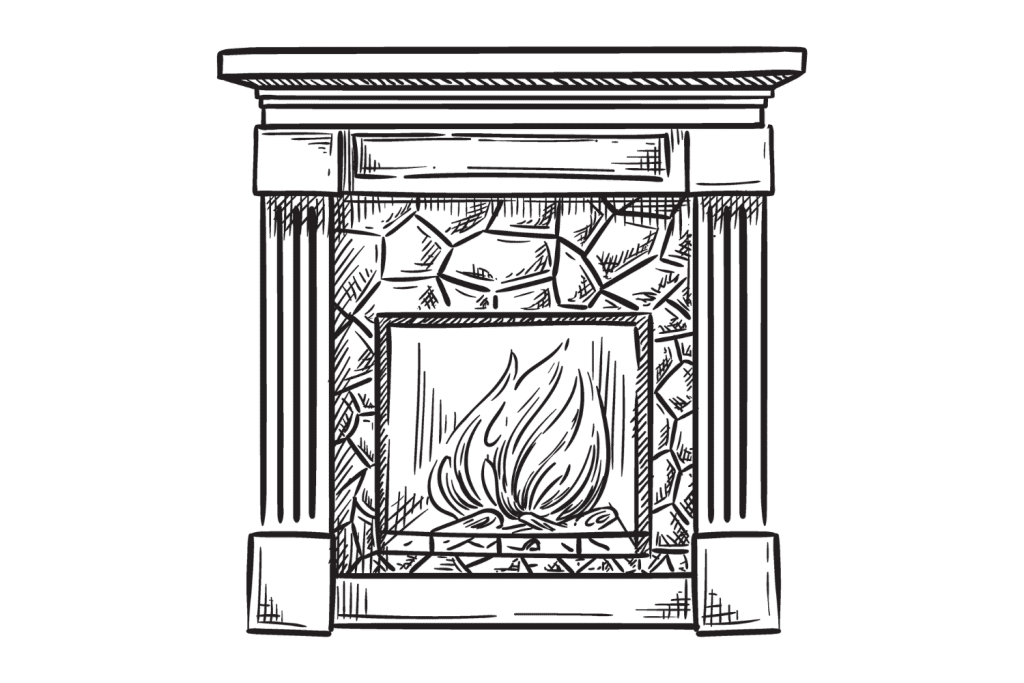
4. The Chimney Connection
In the snowy tundra of Siberia, there were two entrances to people’s homes: their door and the hole smoke would escape from. In the winter, snow drifts would often render the door inaccessible, leaving just the “smoke hole.”
Jerry and Julie Brown’s book, The Psychedelic Gospels, states that any shaman delivering medicine (often in the form of the Amanita muscaria mushroom) in times of heavy snow would need to climb through the smoke hole — or “come down the chimney,” if you’d rather — to enter. According to some reports, the shaman was likely to come around the Winter Solstice, which would be around our current date for Christmas, and snow would have been likely very deep.
Since this was in the dead of Winter, this means a common sight may have been a person in a red coat going from home to home, climbing down the smoke hole to distribute brightly-colored mushrooms.
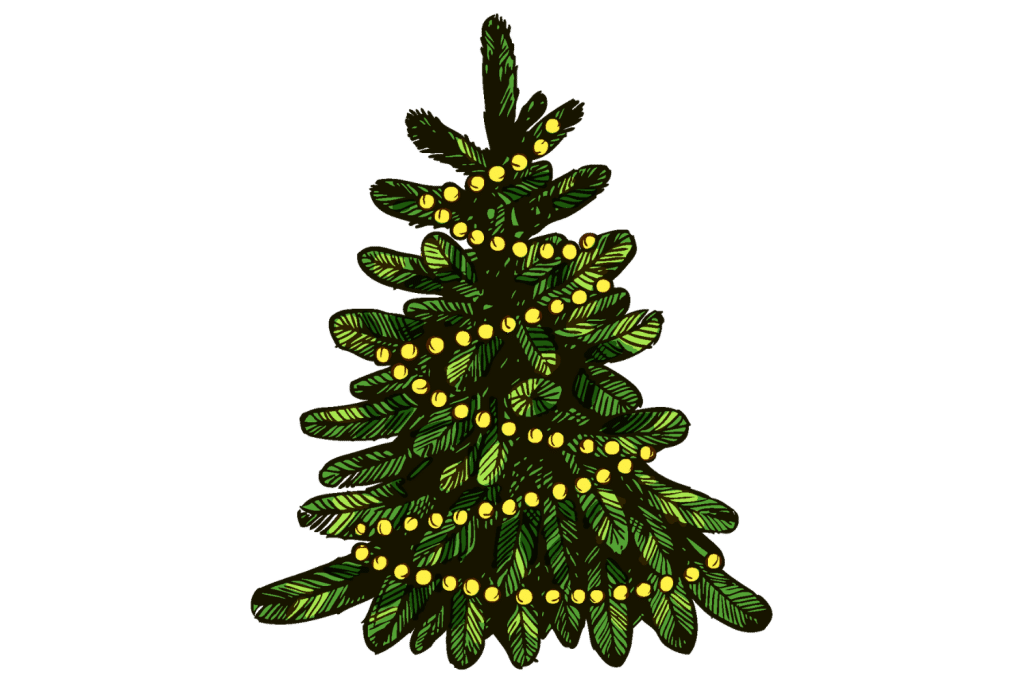
5. Christmas Trees, Decorations, & Mushrooms
Christmas decorations occasionally consist of representations of the Amanita muscaria mushroom on their own. It’s not uncommon for ornaments to feature them, nor decorations celebrating the season.
Beyond this are a series of interesting elements with potential ties to Christmas:
- Pine Trees — Various traditions have celebrated the solstice by bringing trees into their home, but it’s interesting to note they’re the kind Amanitas commonly grow under.
- The Gifts — As alluded to above, some suggest the bright color of presents under the trees represent the spores falling to the base of the mushrooms.
- Decorations — Amanita mushrooms are dangerous to eat fresh, but drying them converts most of the ibotenic acid to muscimol (making them safe to eat). So people would often hang the fresh mushrooms on trees or above the fireplace, potentially resembling ornaments and decorations today.
Arguments For Mushroom Santa
If all of this together seems a little far-fetched, it probably should. These are all examples of correlations, but they don’t necessarily imply causation — however, there are some reasons to give some of this speculation weight.
These are — to quote — a “commonsense appeal of midwinter celebrations” and Constantinian-era reasoning for inventing the holiday.
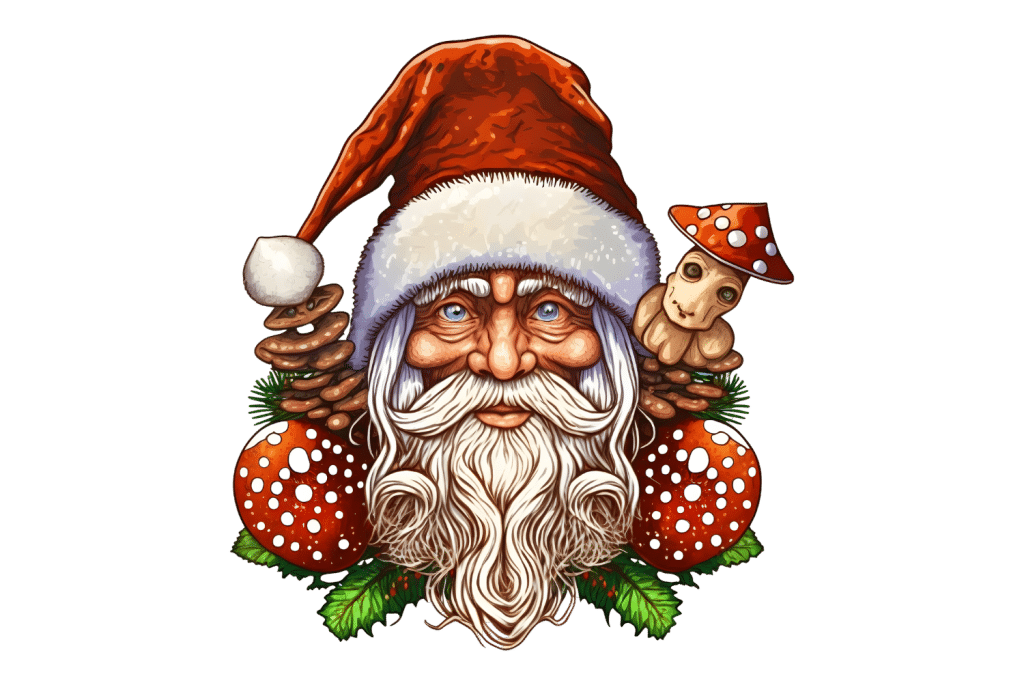
Let’s break each of these down a bit further:
Commonsense Appeal To Mushroom Santa
The phrase “commonsense appeal” comes from Bruce David Forbes in Christmas: A Candid History]. Given what we know about Winter, the historical importance of astrology, and more, it makes sense Christmas traditions come from pagan holidays.
For example, if you were living by the seasons as a hunter-gatherer, it makes sense you would bring a pine tree — the only one with greenery on it — inside to mark the Winter Solstice.
As Forbes puts it:
All of this is not just speculation. This kind of midwinter celebration is indeed what human beings did throughout Europe, in many different cultures, before Christianity… Mulling over the commonsense appeal of midwinter celebrations… many people today are surprised to realize much of what they love about the Christmas season is not really Christmas at all.
While Forbes wasn’t discussing the Amanita muscaria connection explicitly, it very much applies. There was a period before the Christianization of Siberia where the most important thing during the Christmas season was astrological, not religious.
During this time, it’s likely the Amanita mushroom played an important role that has carried through today in ways we can’t fully understand or prove.
Reasoning Behind The Invention of the Christmas Holiday
For the first few hundred years after the death of Jesus, Christianity was an illegal religion, operating in the shadows. Constantine was the first Roman emperor to convert to Christianity and would eventually make it the state religion.
Flipping through the Bible, early Christians happened to sympathize more with “an eye for an eye” than “turn the other cheek” once they came into power. Shortly after Constantine made Christianity the statewide religion, the holiday of “Christmas” became official as well, coinciding with (and replacing) three major Roman holidays.
Each of these seems to have left an element behind in our modern-day celebration.
Here’s a chart with brief explanations of the holidays Christmas replaced and what it may have incorporated from it:
| Holiday | Explanation | Common Elements |
| Saturnalia | Honoring Saturn — god of abundance, wealth, and time — with feasting, gift-giving (often joke gifts), and reversal of social norms to liberate oppressed classes temporarily | Celebrations, social equalization (bosses giving out vacations/bonuses), and gift-giving games like “Dirty Santa.” |
| The Festival of Sol Invictus | Celebration of the Winter Solstice Sol — the Sun god — through the sacrifice of animals | The date of Christmas may have intentionally been on the same day as this festival to replace it. |
| January Kalends (First day of the month) | Celebration of the new year with heavy partying and gift giving along with decorations and widespread celebration | The aura of merriment around Kalends in some descriptions is identical to Christmas, including decorations and gift-giving elements that may survive today in Christmas. |
What Does Rome Have to Do With Siberia?
The chart above illustrates a major tactic of conquest — appropriation. The creationism story in Genesis purposefully mimics several others with an important message: “My god put your sun god in the sky and set them in motion.”
When Constantine instituted a Christian state, Christmas took over these three holidays rather than removing them and asking people to give up their party. Rather, they changed the meaning of the celebrations and claimed them as their own.
This could likely have happened in the Christian takeover of Siberia as well, with some of the appropriating stories mixing the two lasting through to today.
With traditions dating back to antiquity, however, all we know about Santa is:
- He’s like the result of appropriating several cultures and elements into a single holiday
- We’ll likely never know for sure which cultures specific features came out of
References
- Carboué, Q., & Lopez, M. (2021). Amanita muscaria: Ecology, Chemistry, Myths. Encyclopedia, 1(3), Article 3. https://doi.org/10.3390/encyclopedia1030069
- Hajicek-Dobberstein, S. (1995). Soma siddhas and alchemical enlightenment: Psychedelic mushrooms in the Buddhist tradition. Journal of Ethnopharmacology, 48(2), 99–118. https://doi.org/10.1016/0378-8741(95)01292-L

